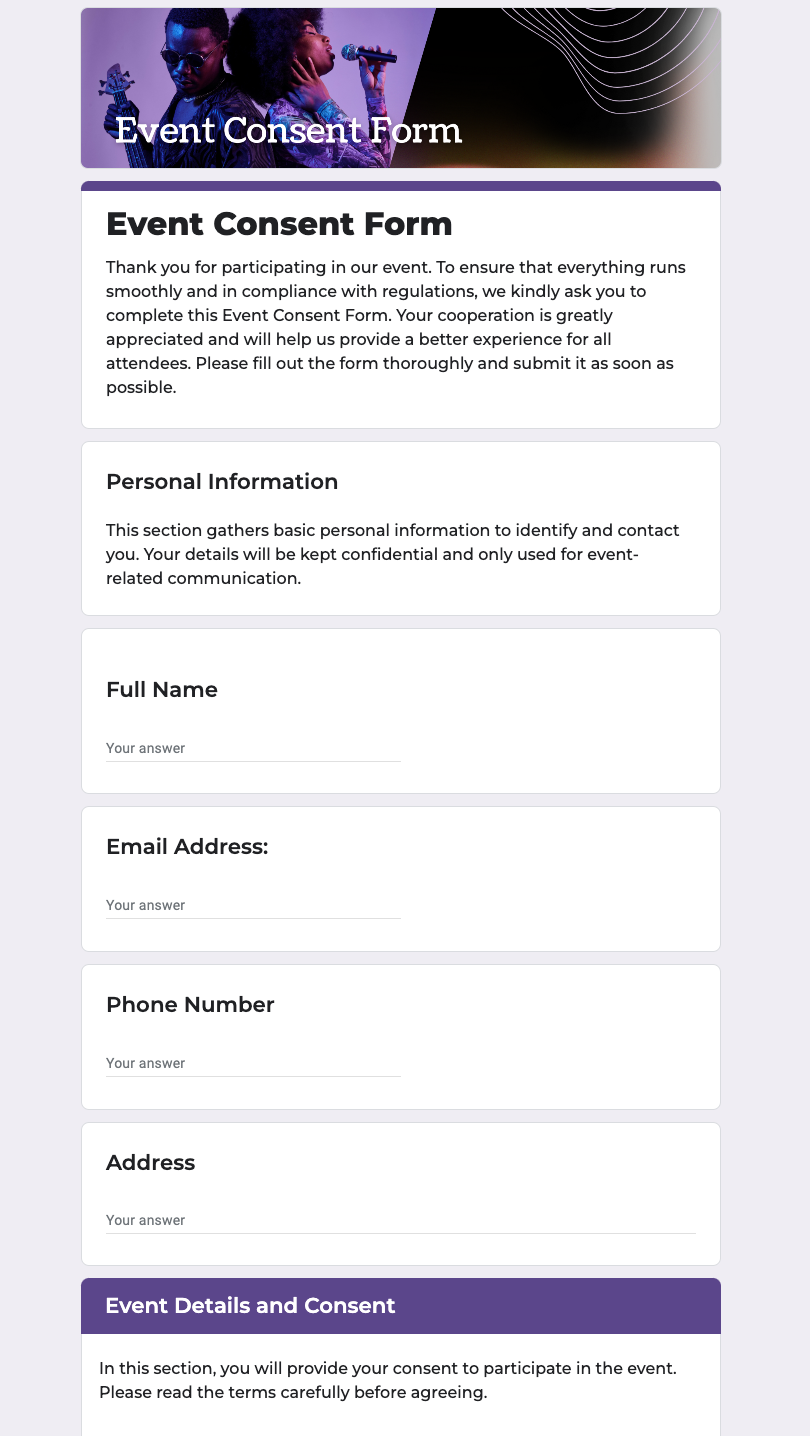Event Consent Form
FREE
An Event Consent Form is a crucial tool for event organizers to ensure legal compliance and protect participant rights. By using this form, you streamline the process of obtaining permissions for photos, videos, and other recordings, making it easy to document consent. This not only reduces the risk of future disputes but also fosters trust and transparency with your attendees. Incorporating this form into your event planning enhances your professionalism and provides peace of mind for both organizers and participants, knowing that all consents are clearly outlined and agreed upon.



